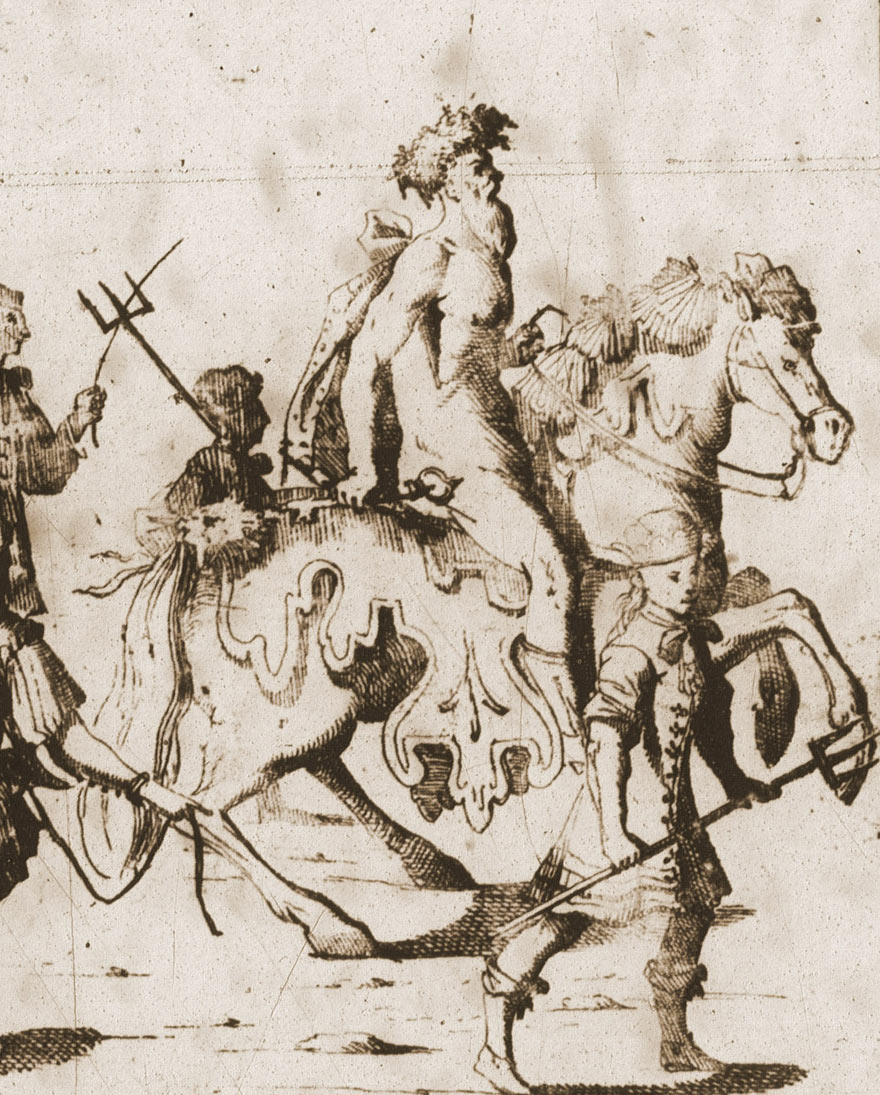
Nudity and the Gods
The nude in the classical world was an icon of ideal proportion, expressed in sculptural representations of gods and goddesses, heroes and heroines, and athletes. The concept was revived in the Early Modern period.
Although many of the gods are depicted as naked in Biffi’s illustrations of the Masquerade at Lodi, it seems unlikely that the nude form would have been permissible in celebrations such as this. Prevailing ideas of decorum, as well as the unpredictability of the weather, would argue against this hypothesis.
Instead, we might suggest an alternative hypothesis, based on Aby Warburg’s study of the Intermezzi of La Pellegrina (1589). There, it was shown that the costume difficulties posed by fitting real feathers to the celestial sirens were solved by the purchase of fabric, which was then painted to imitate feathers.
Likewise, in this case, it might be reasonable to suppose that these gods, played by courtiers, wore close-fitting bodysuits that were illusionistically painted to represent the appropriately svelte and vigorous bodies of deities.
Finally, we need to consider the possibility that the engravings do not provide an accurate record of what the costumes were actually like. In fact, most of the outfits probably consisted of court dress, combined with a broad interpretation of elements associated with the gods.